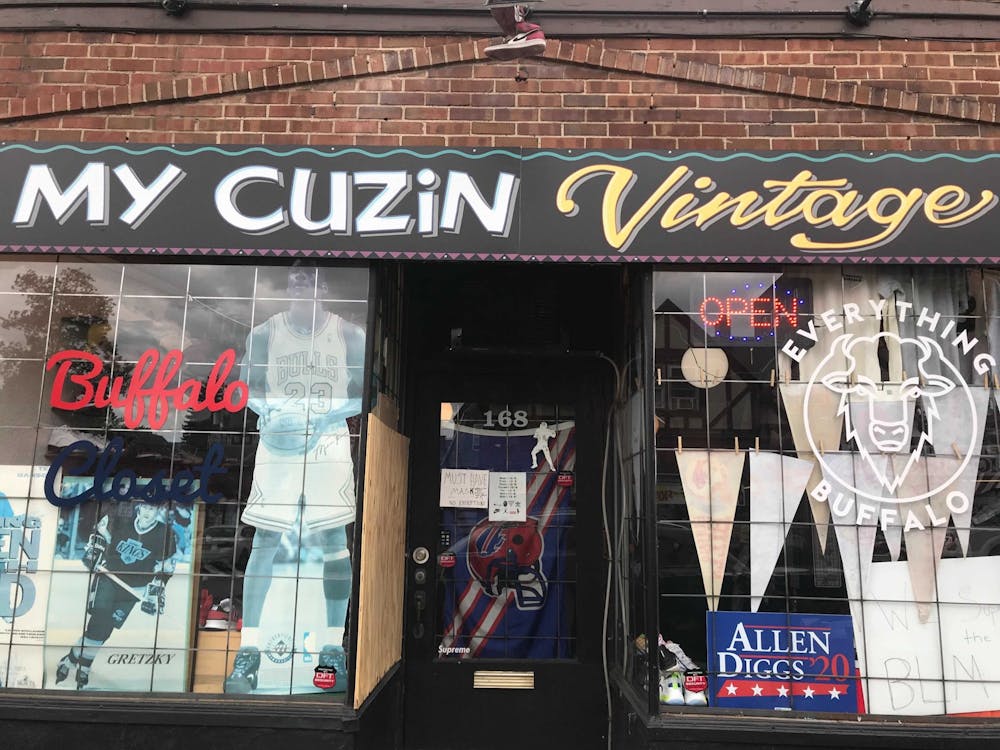Kai Mikolajczak, owner of second-hand clothing store Queen City Vintage, has been thrifting in Buffalo for 15 years, but he’s never seen the scene surge as much as it has in the past few years.
He’s seeing more clients, more stores and more young people buying and selling used clothes.
He thinks it’s partially a desire to save the planet. But it’s also the economy, the allure of vintage pieces and the draw of clothes for cheap that pulls college students in. In fact, 62% of thrifters say they do it to save money, according to a Raymond James study, while 20% say the environment is their main concern. And while used clothing was a $28 billion U.S. market before the pandemic, it is projected to increase to $64 billion in five years, according to industry marketing firms.
“I think it’s just a sign of the times, where we’re in the age of entrepreneurship,” Mikolajczak said. “People are looking to be their own boss.”
Over the last four years, Buffalo has seen more consignment stores. Most new owners are Millennials and Gen-Z’ers and the clothes are uniquely curated and the shops are boutique-looking, with chic names like Paloma Exchange, Second Chic, and Queen City Vintage.
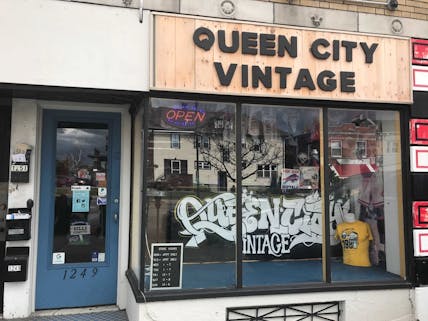
Kai Mikolajczak, owner of second-hand clothing store Queen City Vintage, said he has seen new and more young customers walk inside his store for used clothes amid the pandemic
More price-conscious shoppers still have traditional thrift stores, like Goodwill and The Salvation Army. Both feature warehouses with dozens of racks for thrifters to search through as they find unique or simply wearable items for cheap.
Buffalo, a traditionally working-class city, has a long history with thrift stores. Both Goodwill and The Salvation Army have been here for over 100 years. Goodwill has 11 Western New York outlets, The Salvation Army has five, and there are also two Savers and three AMVETS. There are also a few inexpensive chain consignment stores, such as Plato’s Closet and Clothes Mentor, that came here more recently. Each of these stores has three locations in Erie County. Mikolajczak, who graduated in 2013, started his “business” from his UB dorm in 2009. He lived in Roosevelt and packed the small space with lucky finds.
“My entire dorm closet was just piles of just vintage clothes,” he said. “I would sell them either to friends that lived on the same floor as me, or I’d always have people walk by and compliment my shirt or something and ask where I got it, and word would spread from there.”
He majored in international business and world trade and believes the classes helped him run his business. After college, he worked for seven years at Enterprise Rent-A-Car, but he always sold vintage clothes on the side.
Last year, his side hustle became his full-time job.
“We’re seeing more people that are going for vintage clothing as opposed to going with the fast fashion retailers,” he said. “So we see a lot less people going for brand new items at the mall and coming toward vintage or thrifting.”
Every wall of Queen City Vintage, located at 1478 Hertel Avenue, pops with Buffalo nostalgia sourced from garage sales, the Internet, and even other states. Old Bills jerseys with names like Kelly and Thomas hang alongside t-shirts from the 80s and 90s featuring Tweety Bird and Mickey Mouse. Old bomber jackets that look like something out of 1986 megahit “Top Gun,” cover the walls.
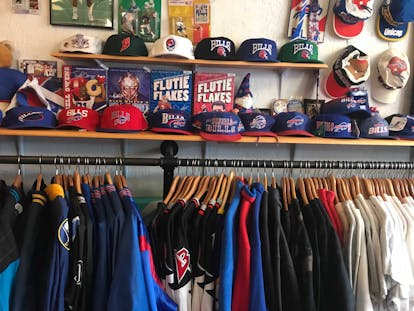
The inside of Queen City Vintage has walls decorated with old Bills jerseys, t-shirts from the 80s and 90s featuring Tweety Bird and Mickey Mouse and much more
Most customers are 18-36 years old, Mikolajczak said, adding that it’s the 18-24 year olds who look for “the oddball pieces.” Allentown, Buffalo’s closest relative to Greenwich Village, boasts another popular gem for thrifters. My Cuzin Vintage is also packed with Bills merch, streetwear and vintage t-shirts. But it has one piece de resistance: a glass case of sneakers.
Derrek Hoffman, who co-owns the store with Vince Spano, grew up thrifting and “camping out for Jordans” and four years ago, he opened the store, located at 168 Elmwood Avenue. Most of his customers are 15-30 years old, he said.
“You notice a lot of younger kids coming in, a lot of the girls buy oversized shirts,” Hoffman said.
Another must-visit paradise for thrifters is Keepsake Consignment at 585 Potomac Ave. White and airy, with lush green plants and a cow hide rug, the store looks like a pricey boutique. Clothes, including funky, printed vintage pieces and current styles from popular brands like Urban Outfitters, Free People and designers hang from fancy-looking racks.
Owner Elena Robertson has always loved thrifting. She often frequents Second Chic, and needed a career change so she opened her own shop about a year ago. Her customers age from 18-80 years old, she said, and many are looking to live more sustainably.
“Our generation is much more aware of the impact fast fashion has on our environment,” Robertson said. “It makes me so happy to see people of all ages making a conscious effort to reuse and recycle clothing.”
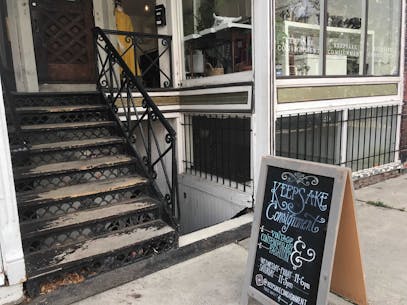
The pricey boutique, Keepsake Consignment has lush green plants and a cow hide rug for decor to compliment the current styles from popular brands like Urban Outfitters, Free People and designers hanging from its fancy-looking racks.
The pandemic and the economic downturn has seen more people thinking more carefully about how they spend their money. It’s also seen them emptying their closets and trying to turn old clothes into profit. Hoffman said he now has competition from teens trying to sell old clothes on Instagram.
“I think during quarantine, I think a lot of kids were into open[ing] up their Instagrams [as thrift stores], and after that it started booming,” he said.
Robertson is pleased Millennials and members of Gen Z are paying attention to the pollution issues that pervade the fashion industry and account for 10% of the global carbon footprint.
“People don’t realize that when they clean out their closet and donate to thrift stores, a good majority ends up in a landfill,” Robertson said. “You’re better off bringing it somewhere that you know it’ll be used such as second-hand clothing stores or shelters in your area.”
For Hoffman, the draws of vintage are style and history.
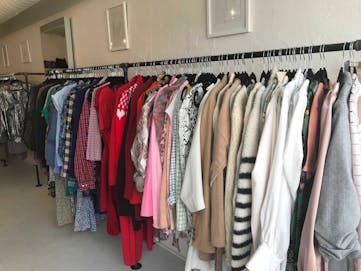
With Keepsake Consignment customers ranging from 18-80 years old, there are many styles to choose from
“I think a lot of people look cooler when they’re wearing it,” he said. “If you find a shirt that’s been around for thirty years, there’s a story behind it and how it got there.”
The arts desk can be reached at arts@ubspectrum.com

